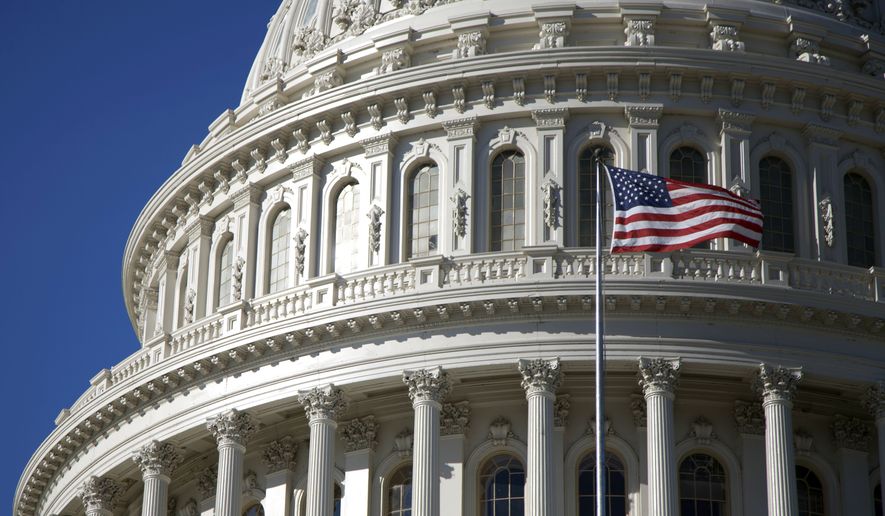In a Capitol growing ever more fractious, Republicans and Democrats managed to forge bipartisanship Wednesday on one of the few things they can all agree to: returning to the days of pork-barrel, or earmark, spending.
While promising to avoid the abuses that led to prison time and deep embarrassment, lawmakers on both sides of the aisle pleaded for Republican leaders to restore earmarks as a central part of legislating on Capitol Hill. They said members of Congress know best how to spend taxpayers’ money.
Democrats even promised not to use pork-barrel spending against Republicans in election campaigns. They said they are prepared to link arms and jump with Republicans back into the trough.
“This will be a bipartisan issue. This is not going to be a ‘gotcha’ issue,” vowed Rep. Steny H. Hoyer of Maryland, the second-ranking Democrat in the House. “I think we can do it.”
Republicans have begun the process of reviving earmarks more than seven years after they imposed a ban on the practice. Rank-and-file members say they have given up too much power to the executive branch.
House Speaker Paul D. Ryan, a Wisconsin Republican who is skeptical of a return to earmarking, promised to at least study the issue in the wake of the 2016 presidential election. That process belatedly kicked off this week with two days of hearings before the House Rules Committee.
Interest groups will testify Thursday, but lawmakers on Wednesday had a chance to express their thoughts. Those who showed up were overwhelmingly in favor of going back to earmarking, or “congressionally directed spending,” as they termed it.
For some, earmarking was the very essence of their jobs.
“Until this is solved, we are no longer the Congress of the people. We are just people,” said Rep. Don Young, Alaska Republican. “What are we here for if we can’t represent the people that vote for us?”
A number of lawmakers said Article I of the Constitution gives Congress the power of the purse, and that means having final say on every dollar spent. Without earmarks, Congress approves large pots of money and the administration ends up deciding where the cash goes, lawmakers said.
But all sides were mindful of past abuses, including lawmakers and staffers who ended up in prison over earmarking and the Washington favor-factory.
It’s not clear what a new earmark system would look like, though plenty of ideas are floating around.
Some lawmakers want to allow only public projects to qualify. Others said a prohibition on personal benefit for lawmakers or their families was critical.
Publicly posting all the requests online seems like a guarantee, but Rules Committee Chairman Pete Sessions, Texas Republican, told reporters on Tuesday that they could go further and require lawmakers to testify to committees in public.
Rep. Emanuel Cleaver, Missouri Democrat, said he is eager to give his requests plenty of publicity.
“I’m not ashamed,” he said. “I want them to vet them because it gives me more praise from my voters. I would like them to be talked about as much as possible.”
Without earmarks, he said, he would not be as eager to vote for big bills because he fears the money would be wasted by bureaucrats who don’t know about the bridges and roads in his district that need repairs.
“Why in the world would I vote for a transportation bill when I know that the people who are going to make the decision are completely oblivious to what I need in my district?” he said. “Who are the constituents going to be upset with? A no-name bureaucrat in Washington? No, [they’ll say] our congressman can’t deliver, our congressman can’t deliver.”
But Rep. Mark Walker of North Carolina, chairman of the conservative Republican Study Committee, said Congress has functioned without earmarks for seven years. He dismissed arguments that the Constitution allows earmarks.
“Just because you can make a constitutional argument, I’m not sure it’s always the right thing,” he said. “In the words of Apostle Paul, not all things lawful are expedient.”
For those looking to restore earmarks, timing is an issue.
While some members said a delay until next year would give both parties a chance to take credit and blame equally, others want to speed earmarks back into the process in time to help pass President Trump’s planned infrastructure bill.
Mr. Hoyer said he wants earmarks back “as soon as possible.”
He said it’s important that both parties act together to help defuse any partisan controversy among the public.
Mr. Sessions said earmark spending sprees are unlikely because there is just not as much money in the discretionary budget as their used to be, thanks to spending caps that have been imposed since Republicans took control of the House in 2011.
But Rep. Mark Sanford, South Carolina Republican, said earmarks entice the federal government to spend money on things it never would have paid for otherwise such as parking garages and bookshelves for community libraries.
At their peak, earmarks accounted for about 1 percent of government spending — though they were an outsized share of embarrassment for lawmakers.
One of those was the “Bridge to Nowhere,” a project slated to cost a third of a billion dollars, linking the Alaskan mainland to an island with a population of about 50.
Mr. Young defended that earmark in testimony Wednesday.
He said the project was part of Alaska’s allocation of money in a transportation bill and wasn’t competing with other states’ money. He also said criticism that there wasn’t anything important enough to earn the bridge to Gravina Island was shortsighted.
“The bridge has not been built. It should have been built. There’s never been a bridge anywhere that’s had something on the other side until it’s been built,” he said.
• Stephen Dinan can be reached at sdinan@washingtontimes.com.




Please read our comment policy before commenting.